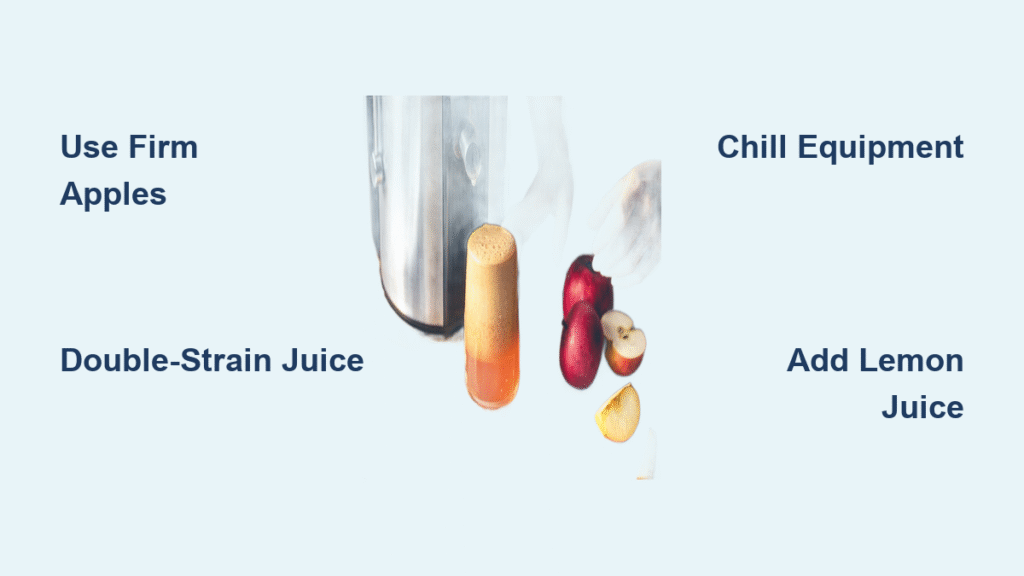There’s nothing quite like the vibrant, garden-fresh taste of homemade tomato juice made right in your kitchen blender. Unlike store-bought versions that often taste flat and overly salty, your homemade blender tomato juice captures peak-season flavor while giving you complete control over every ingredient. Whether you’re craving a nutritious morning boost or crafting the perfect Bloody Mary base, this guide shows you exactly how to transform ripe tomatoes into refreshing juice using nothing more sophisticated than your everyday blender. In just minutes, you’ll create a beverage that’s fresher, healthier, and more flavorful than anything you’ll find on grocery store shelves.
The magic of blender tomato juice lies in its simplicity—no special equipment or complicated techniques required. By following these precise methods, you’ll avoid common pitfalls like watery consistency or bitter flavors that plague many first-time attempts. You’ll learn how to select the perfect tomatoes, extract maximum juice with minimal waste, and create restaurant-quality flavor that keeps your family coming back for more. Let’s dive into the process that transforms ordinary tomatoes into extraordinary juice.
Select Tomatoes That Guarantee Flavorful Blender Tomato Juice
Overripe tomatoes create the richest blender tomato juice—they should feel heavy for their size and yield slightly when gently squeezed. These characteristics indicate maximum juiciness and sugar development, which translates to vibrant flavor in your finished juice. Larger varieties like beefsteak or heirloom tomatoes typically deliver more juice per fruit, though cherry tomatoes work well if that’s what you have available.
Avoid tomatoes with cracks, wrinkles, or soft spots—these signs of overripeness introduce off-flavors that ruin your juice. The best tomatoes emit a strong, sweet fragrance at the stem end; if they lack aroma, they’ll lack flavor in your blender tomato juice. For optimal results, use tomatoes at room temperature rather than cold from the refrigerator, as chilled tomatoes resist blending and yield less juice.
Core and chop tomatoes into 1-inch pieces before adding them to your blender. This prevents violent vibration that occurs with whole tomatoes and ensures even processing. Remove the tough white core from each tomato—this fibrous part doesn’t break down well during blending and creates bitter notes in your juice.
Set Up Your Blender for Maximum Juice Extraction

Standard home blenders work perfectly for blender tomato juice—you don’t need expensive high-powered models. However, your blender jar must hold at least 5 cups total volume to accommodate both tomatoes and the water needed for proper blending. Fill no more than two-thirds full to allow room for expansion during processing.
Add water strategically using the ¾ cup per 4 cups ratio—this creates ideal blending consistency without diluting flavor. Very juicy, peak-season tomatoes might blend smoothly without added water; start with less and add only if the blender struggles. For best results, layer ingredients smartly by placing chopped tomatoes in first, then adding water on top. This prevents cavitation (air pockets that stop blending) while ensuring smooth operation.
Blend continuously for 1-2 minutes until the mixture looks completely smooth and uniform. Listen for the sound to shift from chunky grinding to a smooth whirring—that’s your signal that the tomatoes have fully broken down. If your blender has multiple speeds, start low to break up pieces, then increase to high for perfect consistency.
Strain for Professional-Quality Clarity
Nut milk bags outperform traditional strainers for blender tomato juice extraction. Place your bag inside a large bowl, folding the edges over the rim for stability. Pour the blended mixture until the bag is ¾ full—overfilling makes squeezing difficult. Let gravity work first for 30 seconds before gathering the top and twisting gently from top to bottom.
Cheesecloth requires 2-3 layers to prevent pulp from pushing through. Position it over a fine mesh strainer set inside a bowl, then pour the mixture slowly. For maximum yield, use a rubber spatula to gently press pulp against the strainer after initial drainage—this method extracts about 20% more juice than gravity alone.
Enhance Flavor Like Professional Mixologists

Create Restaurant-Quality Vegetable Blend
Add 1/3 cup chopped celery and 1 cup chopped carrots to your tomatoes before blending for authentic V8-like flavor. These vegetables contribute natural sweetness and savory depth that transforms basic tomato juice into a complex beverage. For herbaceous notes, toss in a small handful of fresh basil, parsley, or cilantro during the last 30 seconds of blending.
Build flavor in layers starting with ½ teaspoon salt, 1/8 teaspoon black pepper, and 1 tablespoon fresh lemon juice per quart of juice. The lemon juice brightens flavor while acting as a natural preservative. Customize your heat level with 1 teaspoon hot sauce for gentle warmth or a pinch of cayenne for more intense kick.
Sweeten only if necessary—peak summer tomatoes rarely need additional sugar. If required, use 1 teaspoon honey or a splash of apple juice for natural sweetness. Remember that blender tomato juice develops flavor overnight; refrigerate for 2-4 hours before serving for perfectly balanced taste.
Store Your Blender Tomato Juice for Longest Freshness
Airtight glass containers preserve flavor best—tomato juice absorbs refrigerator odors quickly through plastic. Fill containers completely to minimize oxidation, leaving just enough space for expansion if freezing. Properly sealed blender tomato juice stays fresh for 4-7 days in the refrigerator.
Freeze in practical portions using ice cube trays—each cube equals approximately 2 tablespoons. Once frozen, transfer cubes to labeled freezer bags for easy access. When freezing larger quantities, leave 1 inch of headspace to prevent container cracking during expansion. Frozen juice maintains quality for up to 18 months, though flavor peaks within the first 6 months.
Thaw safely by moving containers to the refrigerator overnight or placing sealed bags under cold running water. Never microwave frozen tomato juice—this creates uneven heating that breaks down nutrients and alters texture.
Identify Spoilage Before It Ruins Your Experience
Trust your nose first—fresh blender tomato juice smells bright and slightly sweet. Discard immediately if you detect sour, fermented, or vinegar-like aromas—these indicate bacterial growth even before visible signs appear. While slight separation is normal in fresh juice, dramatic color changes from vibrant red to brownish hues signal spoilage.
Check for mold growth along container edges or on the surface—any fuzzy white or green spots mean the entire batch is contaminated. Don’t attempt to salvage spoiled juice by removing visible mold; harmful bacteria may have spread throughout the liquid.
Transform Leftovers into Gourmet Ingredients
Create tomato powder from strained pulp by spreading it thinly on a baking sheet and drying at your oven’s lowest temperature (170°F) for 2-3 hours. Once completely dry and brittle, grind into powder using a spice grinder. This versatile seasoning adds intense tomato flavor to soups, sauces, and dressings.
Fry tomato skins until crispy for elegant cocktail garnishes. Separate skins from pulp, pat dry thoroughly, and fry in 350°F oil for 30-45 seconds until golden. Drain on paper towels and sprinkle with salt for a sophisticated touch to Bloody Marys or salads.
Perfect Your Bloody Mary Base in Minutes

Blend tomatoes with cocktail ingredients by adding 1 teaspoon Worcestershire sauce, ¼ teaspoon celery salt, and your preferred hot sauce during processing. This creates a ready-to-use Bloody Mary base that only needs vodka and ice. For best results, chill your blender tomato juice thoroughly before serving—warm juice tastes flat and loses its vibrant character.
Experiment with virgin variations that shine without alcohol. Add a splash of clam juice for a Virgin Caesar, or mix with other vegetable juices for custom mocktails. The fresh vegetable flavors in homemade juice make it superior to store-bought alternatives for any cocktail application.
Fix Common Blender Tomato Juice Problems
Watery consistency is normal in fresh juice—simply shake before serving. For thicker texture, reduce water added during blending or strain less thoroughly. If you prefer commercial-style viscosity, gently warm strained juice to 180°F for 10 minutes, then cool—this pasteurization creates a smoother texture while preserving most nutrients.
Eliminate bitter flavors by ensuring complete removal of tomato cores, which contain bitter compounds. Avoid using green or underripe tomatoes that taste harsh and acidic. If bitterness persists despite using ripe tomatoes, balance it with ½ teaspoon honey or a splash of apple juice—the natural sugars counteract bitter compounds effectively.
Final tip: Make blender tomato juice when tomatoes are at peak season—usually late summer through early fall. The difference between peak-season and off-season tomatoes is dramatic, turning good juice into unforgettable juice. Once you taste fresh blender tomato juice, store-bought versions will forever taste like pale shadows of the real thing. With these techniques, you’ll consistently create vibrant, flavorful tomato juice that elevates everything from morning beverages to cocktail hour, all with nothing more than your trusty kitchen blender.





